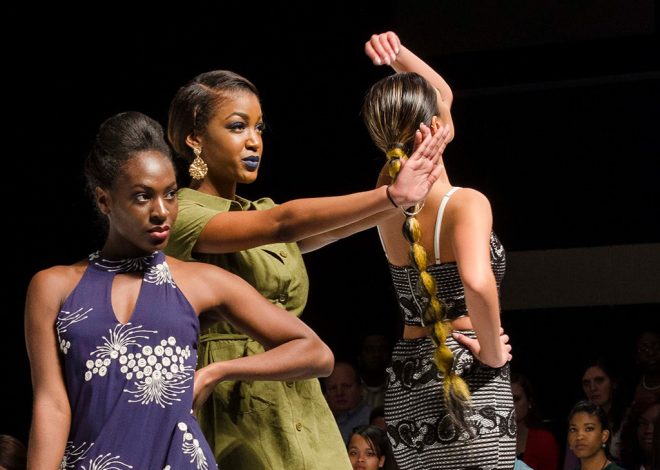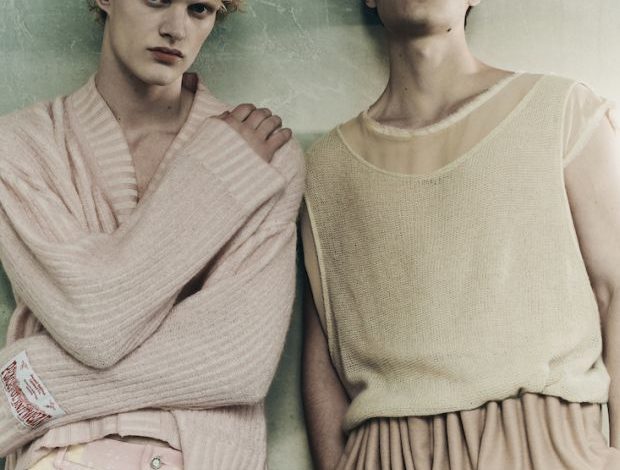
City in China’s Hainan vigorously promotes protection, inheritance of ethnic cultures
Wuzhishan city in south China’s Hainan Province has actively promoted the creative transformation and innovative development of fine cultures of the Li and Miao ethnic groups, focusing on the protection, inheritance and development of Li and Miao ethnic cultures.
The Wuzhishan Ethnic Fashion “Village Show” series of cultural activities, which lasted nearly two months, wrapped up in the city on Nov. 11.
Models display wedding dresses of the Miao ethnic group at the Wuzhishan Ethnic Fashion “Village Show” in Wuzhishan city, south China’s Hainan Province. (Photo courtesy of the publicity department of the Communist Party of China Wuzhishan municipal committee)
During the event, several “Village Show” performance teams highlighted local culture, art, agricultural produce, places of interest, and fork skills as they walked down the catwalk demonstrating unique rural cultures. Dressed in Li and Miao costumes, many of the models of the teams were native villagers and local primary-level officials.
“In recent years, we have been committed to promoting the inheritance and development of Li and Miao ethnic cultures. We hope to draw the people’s attention to ethnic cultures through the creative and expressive fashion show,” said Zhu Hongling, Party chief of Wuzhishan city.
Zhu explained that the event was aimed at stimulating the people’s recognition of traditional culture, while driving the development of the industries of local ethnic groups and tourism.
“I watched every performance of this year’s Fashion ‘Village Show’,” said a tourist surnamed Huang from south China’s Guangdong Province.

Models strut on the catwalk during the Wuzhishan Ethnic Fashion “Village Show” in Wuzhishan city, south China’s Hainan Province. (Photo courtesy of the publicity department of the Communist Party of China Wuzhishan municipal committee)
Records showed that over 40,000 people watched the “Village Show” in person, and the event received more than 580,000 online views and achieved over 1.9 million likes.
Chen Mengli, a Li woman born in the 1990s, was a costume designer for the “Village Show.” After graduating from college, she chose to return to her hometown to start a business making traditional Li costumes.
Chen’s team incorporated elements of Li brocade, which is a traditional craft of the Li ethnic group, tree ferns, and hiking/biking culture into modern fashion designs. Chen said that people’s high praise for the fashion show strengthened her determination to carry forward the Li brocade culture.
Chen has created a Li brocade brand, with her annual online and offline sales revenue exceeding 1 million yuan ($141,000).
“Umbrellas, hats, mosquito patches and other products featuring Li brocade elements are very popular. The maximum daily sales revenue of the brick-and-mortar store in Maona village surpassed 3,000 yuan,” said Chen.
According to her, the best way to carry on the Li brocade culture is to integrate Li brocade into people’s daily lives.
The “Village Show” boosted tourism in Wuzhishan city. During the eight-day combined Mid-Autumn Festival and National Day holiday period this year, the city received 173,000 tourist visits, a year-on-year increase of 156 percent, generating 66.36 million yuan in tourism revenue.

Photo shows spectators at the Wuzhishan Ethnic Fashion “Village Show” in Wuzhishan city, south China’s Hainan Province. (Photo courtesy of the publicity department of the Communist Party of China Wuzhishan municipal committee)
The city has started planning for next year’s “Village Show,” encouraging more villagers to take part in the cultural event. It has also received an invitation from the organizer of the Hainan International Auto Show to showcase ethnic costumes, and is in talks with Henan Culture and Tourism Investment Group Co., Ltd. on the commercial operations of the “Village Show” to develop it into a regular cultural event to maintain revenue growth.
In August 2023, Wuzhishan collaborated with Istituto Marangoni, a prestigious fashion school in Italy, to promote the upgrading of Li brocade weaving techniques and the Li brocade’s integration with the fashion industry.
This year, Wuzhishan sent three groups consisting of 50 intangible cultural heritage talents to showcase Li brocade costumes and weaving skills at the Milan Fashion Week and participate in cultural promotion events in Singapore and Malaysia. The city has also collaborated with renowned international fashion colleges to offer training on Li brocade costumes.

Models display costumes designed by Istituto Marangoni, a prestigious fashion school in Italy, for the Wuzhishan Ethnic Fashion “Village Show” during the show. (Photo courtesy of the publicity department of the Communist Party of China Wuzhishan municipal committee)
“Participating in overseas events enables us to introduce the Li brocade and Li culture to more people, and allows us to learn about design concepts from other countries and regions and integrate more fashion elements into our products, thus giving a new lease on life to Li brocade weaving techniques,” said Liu Xianglan, a national-level inheritor of the weaving, dyeing and embroidery techniques of the Li ethnic group.
Wuzhishan has established 22 organizations aimed at passing on the intangible cultural heritage and seven intangible cultural heritage workshops, according to Wang Yuzhao, deputy curator of the cultural center of Wuzhishan.
(Web editor: Hongyu, Liang Jun)


